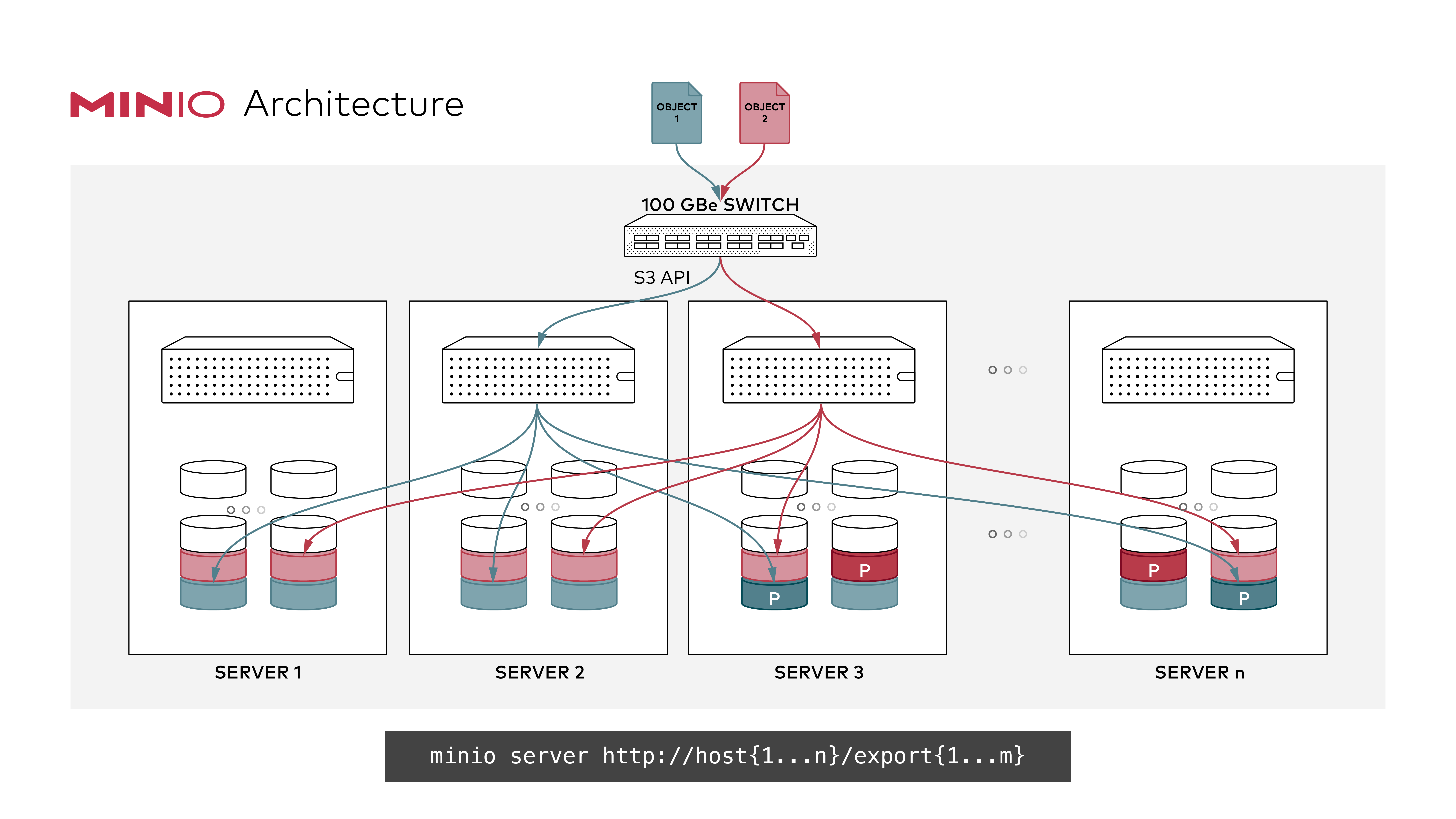- Sort Score
- Result 10 results
- Languages All
Results 1 - 10 of 11 for nodejs (0.18 sec)
-
docs/integrations/veeam/README.md
- When you create your backup job, choose the backup repository you created above. ## Test the setup The next time the backup job runs, you can use the `mc admin trace myminio` command and verify traffic is flowing to the MinIO nodes. For Veeam Backup and Replication you will need to wait for the backup to complete to the performance tier before it migrates data to the capacity tier (i.e., MinIO). ```
Plain Text - Registered: Sun Apr 28 19:28:10 GMT 2024 - Last Modified: Thu Sep 29 04:28:45 GMT 2022 - 5.4K bytes - Viewed (0) -
docs/bigdata/README.md
Kubernetes manages stateless Spark and Hive containers elastically on the compute nodes. Spark has native scheduler integration with Kubernetes. Hive, for legacy reasons, uses YARN scheduler on top of Kubernetes.
Plain Text - Registered: Sun Apr 28 19:28:10 GMT 2024 - Last Modified: Thu Sep 29 04:28:45 GMT 2022 - 14.7K bytes - Viewed (0) -
README.md
### Upgrade Checklist - Test all upgrades in a lower environment (DEV, QA, UAT) before applying to production. Performing blind upgrades in production environments carries significant risk.
Plain Text - Registered: Sun Apr 28 19:28:10 GMT 2024 - Last Modified: Wed Feb 14 17:51:34 GMT 2024 - 18.7K bytes - Viewed (0) -
README.md
--- FastAPI is a modern, fast (high-performance), web framework for building APIs with Python 3.8+ based on standard Python type hints. The key features are: * **Fast**: Very high performance, on par with **NodeJS** and **Go** (thanks to Starlette and Pydantic). [One of the fastest Python frameworks available](#performance). * **Fast to code**: Increase the speed to develop features by about 200% to 300%. *
Plain Text - Registered: Sun Apr 28 07:19:10 GMT 2024 - Last Modified: Thu Apr 18 23:58:47 GMT 2024 - 21.9K bytes - Viewed (0) -
docs/throttle/README.md
Example: Limit a MinIO cluster to accept at max 1600 simultaneous S3 API requests across all nodes of the cluster. ```sh export MINIO_API_REQUESTS_MAX=1600 export MINIO_ROOT_USER=your-access-key export MINIO_ROOT_PASSWORD=your-secret-key minio server http://server{1...8}/mnt/hdd{1...16} ``` orPlain Text - Registered: Sun Apr 28 19:28:10 GMT 2024 - Last Modified: Sat Feb 12 00:51:25 GMT 2022 - 2.4K bytes - Viewed (0) -
docs/metrics/prometheus/README.md
``` ##### Node (optional) Optionally you can also collect per node metrics. This needs to be done on a per server instance. The scrape configurations should use all the servers under `targets` so that graphing systems like grafana can visualize them for all the nodes ```yaml scrape_configs: - job_name: minio-job metrics_path: /minio/v2/metrics/node scheme: http static_configs:
Plain Text - Registered: Sun Apr 28 19:28:10 GMT 2024 - Last Modified: Fri Apr 12 15:49:30 GMT 2024 - 7.1K bytes - Viewed (0) -
helm/minio/README.md
```bash helm install --set persistence.enabled=false minio/minio ``` > *"An emptyDir volume is first created when a Pod is assigned to a Node, and exists as long as that Pod is running on that node. When a Pod is removed from a node for any reason, the data in the emptyDir is deleted forever."* ### Existing PersistentVolumeClaim If a Persistent Volume Claim already exists, specify it during installation.
Plain Text - Registered: Sun Apr 28 19:28:10 GMT 2024 - Last Modified: Wed Jan 24 07:27:57 GMT 2024 - 10.9K bytes - Viewed (0) -
docs/distributed/README.md
Example 1: Start distributed MinIO instance on n nodes with m drives each mounted at `/export1` to `/exportm` (pictured below), by running this command on all the n nodes:  ### GNU/Linux and macOS
Plain Text - Registered: Sun Apr 28 19:28:10 GMT 2024 - Last Modified: Thu Jan 18 07:03:17 GMT 2024 - 8.8K bytes - Viewed (0) -
docs/tls/README.md
subjectAltName = @alt_names [alt_names] IP.1 = 127.0.0.1 DNS.1 = localhost ``` Run `openssl` by specifying the configuration file and enter a passphrase if prompted: ```sh openssl req -new -x509 -nodes -days 730 -keyout private.key -out public.crt -config openssl.conf ``` ### 3.3 Use GnuTLS (for Windows) to Generate a Certificate This section describes how to use GnuTLS on Windows to generate a certificate.
Plain Text - Registered: Sun Apr 28 19:28:10 GMT 2024 - Last Modified: Thu Sep 29 04:28:45 GMT 2022 - 8.4K bytes - Viewed (0) -
docs/multi-tenancy/README.md
This topic provides commands to set up different configurations of hosts, nodes, and drives. The examples provided here can be used as a starting point for other configurations. 1. [Standalone Deployment](#standalone-deployment) 2. [Distributed Deployment](#distributed-deployment)
Plain Text - Registered: Sun Apr 28 19:28:10 GMT 2024 - Last Modified: Thu Sep 29 04:28:45 GMT 2022 - 3K bytes - Viewed (0)